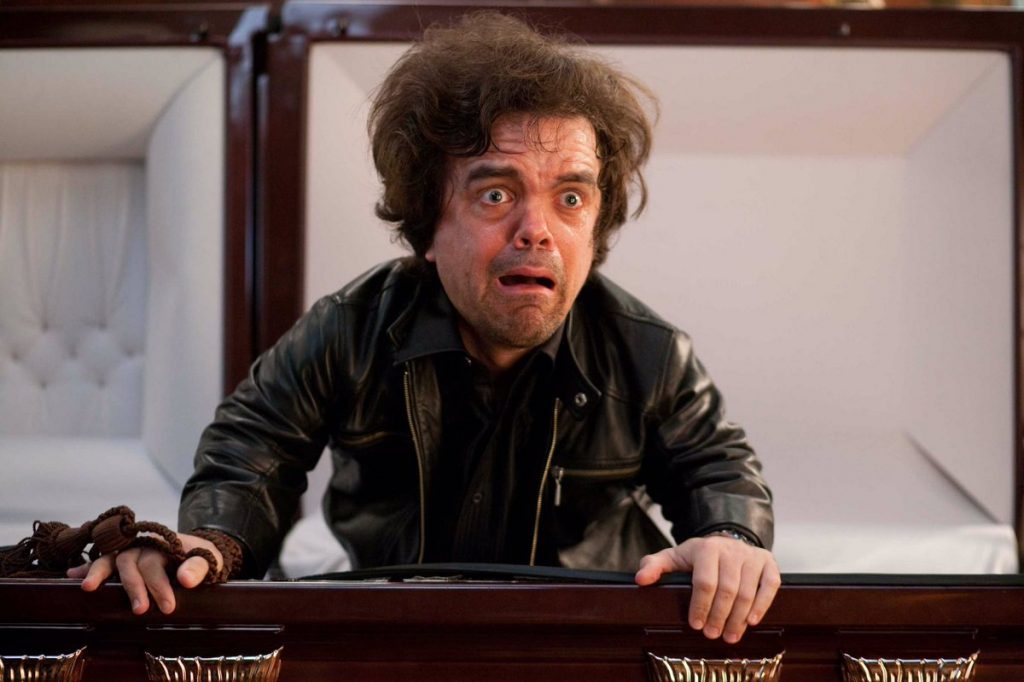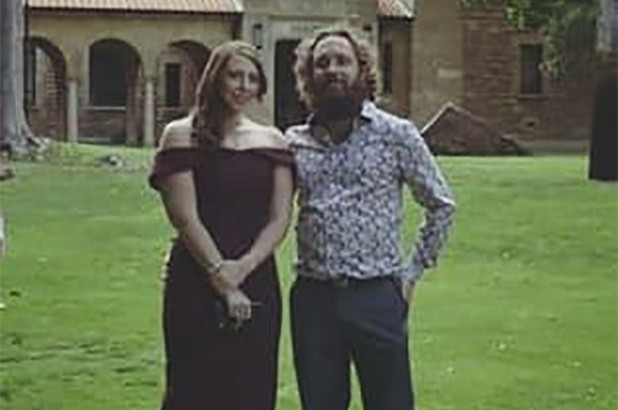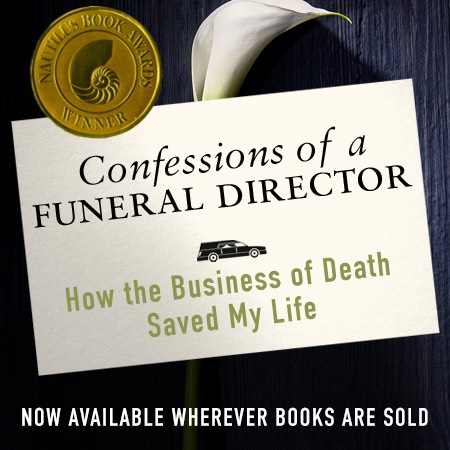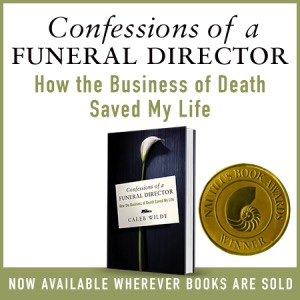Death
Some of the Mistakes I’ve Made as a Funeral Director

Funeral directing can be a lot like parenting.
If you have just one kid, you can usually keep the chaos at bay. When there are two kids, life can get hectic real quick. When there are three kids or more? The six-month-old is crying because he’s hungry, your three-year-old has magically found the fragile wine glass you had left out the night before, and when you ask your six-year-old for help, he starts to sass you because “he was right in the middle of his game.” All that happens in the span of a minute while you’re trying to cook dinner. For those of us that know the chaos, it’s not “can I stop the chaos”, it’s “how much can I limit the chaos?”
Mistakes happen. The three-year-old drops the glass, you drop the egg that you were about to crack for the quiche, and your six-year-old slams down the PS4 controller in protest, while you trip over the six-month-old and cut your knee on remanents of your broken stemware.
Running funerals are the same (without the quiche and the wine … although wine at funerals isn’t an awful idea). You have one funeral going, and it’s fairly simple. You can give your undivided time to just that one family. But all of a sudden, two more people die and now you have three funerals that you’re juggling, doing your best to maintain a semblance of order.
At this point, mistakes can happen. You do your best to create checklists and accountability measures. You do your best to overcommunicate the small details, but sometimes mistakes still happen
“Well, why don’t you just hire more staff? When you have too many kids, you get some help.” Oh, sage-of-the-internet-who-assumes-everyone-has-less-intelligence, let me answer that by saying this: things can get so busy all at once (which is the weird and unpredictable nature of this business) that it’s like going from one child to 10 children in a matter of hours. One minute you have too many staff at the funeral home, and the next minute you’re short staffed.
I met with a family the other week who instructed me to place a specific t-shirt at the foot of their husband’s casket during the public viewing. The day I was supposed to dress him, I got sick (I get semi-yearly days of utter brain fog that supposedly results from my Lyme’s Disease), leaving my grandfather to do my work.
In my sickened state, I forgot to tell Pop-pop to put the t-shirt at the foot of the casket. He put the t-shirt on the deceased.
I pulled myself out of bed for the funeral the following day, and when I saw what had happened, my heart sank. I apologized profusely to the family. They forgave me. That was a couple weeks ago and I’m still upset about it all.
But shit happens in life and shit happens in death.
Have you misspelled words in an email? I’ve misspelled words in an obituary.
Have you dropped a cup of coffee before? When I first started, I had a loaded stretcher collapse on me in the middle of a parking lot.
Have you ever confused your kids and put one to sleep in the wrong bed? Funeral directors might put a body in the wrong casket.
Have you ever thrown something in a fire, only to have that thing explode and cause 10K worth of damage? Well, I’ve missed a pacemaker or two in my career and reaped the consequences.
Maybe you’ve had a random collapsible stretcher loaded with a dead body and you were trying to get it into the bed of a van at a nursing home and it just wouldn’t collapse … and you tried and tried and a crowd started to gather as they watched you struggle to get the loaded stretcher into a van, and you just couldn’t and you almost started crying, and then after five minutes of trying to get it in the van you realized you were pulling the wrong leaver and you were almost at the point where you just wanted to crawl in the back of the van with the dead person and be dead too?
No? Just me.
As a parent, I realize my mistakes. I learn from them. I correct them if I can. And I tell my kids when I’m wrong. I don’t act like a know-it-all around my kids. I don’t give them the impression I’m a saint.
It’s hard for funeral directors to be honest with their mistakes because the whole process of putting a funeral together is SO EMOTIONALLY CHARGED. It’s not like I gave you Quarter Pounder instead of the Big Mac that you wanted. I can correct that mistake. We get one shot to do everything right. A mispelled name in an obituary can cause a firestorm. A pacemaker exploding in a retort can cost $10,000. Combing the hair the wrong way on the deceased can incite a flood of tears in the family. Everything needs to be done right.
But let me tell you from experience, it’s so much easier to be honest with your mistakes than it is to put together an elaborate lie or blame it on someone else. As tempting as it is to make excuses, I’ve learned that mistakes are human and apologies cultivate our humanity.
Love you all 🙂
P.S. If you’re feeling brave, I’d love to hear about your mistakes as well!
*****
If you like my writing, consider buying my 2017 Nautilus Book Award Gold Winner, Confession of a Funeral Director (click the image to go to the Amazon page):
What a funeral director would say to someone who’s suicidal

If you’re suicidal, here is some perspective from a funeral director:
In the nearly 15 years I’ve been working in the funeral business, I’ve seen around 60 plus suicide victims. I’ve seen the hangings. I’ve seen the intentional ODs. The suicide cocktails. I’ve seen the carbon monoxide deal. I’ve seen the shotgun to the head (and, seriously, guys, don’t do it this way … no funeral director wants to show a shotgun face to your mother). There have been some creative ones as well, like slamming the car into tractor trailers (another bad idea), or listening to Nickelback for 48 hours on end (I kid).
Somewhat unlike police, coroners, or anyone else involved in the forensic side of death by suicide, funeral directors usually hear the personal story behind the suicide. Many times the family is still piecing together the puzzle of “why”, but they involve us in the puzzle. They tell us about the deceased’s life, what was going on, the hardships, the possible reasons. We’re in a unique position in that we not only see the physical result of the suicide, but we also hear the personal side as well.
The majority of suicides (I’d estimate 70% of the ones I’ve seen) are some type of “break-up suicide” (this can involve a romantic breakup that’s either your fault or your partner’s fault; a break-up having to do with a job [the firing kind]; or a sudden break-up of your identity).
Approximately 20% are from the exhaustive battle with mental illness.
The remaining 10% are those who are suffering from a physical illness and don’t want to continue with their pain (that 10 % is a demographic that I’ve addressed before … suffice it to say, if you’re terminal and you don’t want to prolong the inevitable, you should have the legal right to do so).
BREAK-UP SUICIDES
Most (certainly not all) break-up suicides are men … usually young men.
Let me speak to the men for a minute before I move on. Men struggle to cry at funerals. I’ve seen men get angry, but cry? Sometimes. And if they do, they try to hide it like something’s wrong with it. We’ve been taught that it’s not masculine to express our feelings unless those feelings are anger (and then it’s somehow okay). When we feel grief, or rejection, or worthlessness, depression, or real guilt we have absolutely little idea how to deal with it. I’m sorry that we live in a culture of toxic masculinity. But we do. And these emotions — as strong as they are now, and as impossible as they are right now — are apart of you as a human being, and they’re okay. Because as a human being, you’re capable of crying, of feeling worthless, of rejection, depression, and asking forgiveness, and coming out on the other side with your identity intact. If you’re feeling these things, you’re not “less of a man.” Because even though you may feel emasculated, your identity is NOT based on your penis, it’s based on your humanity.
Okay, let’s switch back to chatting with everyone thinking about “break-up suicide” (because this is a human problem, not just a man problem):
These are usually the messy ones. The one’s funeral directors hate from a technical basis. The shot-gun to the head kind. Often while drunk. Because for most of the “break-up suicides” your mind is feeling utterly overwhelmed and the emotions are so strong, so difficult that you don’t always think. You feel trapped. You feel like there’s no moving forward. No tomorrow. Because you feel like that one thing your identity was tied to … that thing that meant so much to you has either cheated on you, rejected you, or shit on you or vice versa.
I want to remind you of this: your life doesn’t exist in the vacuum of your relationship with your partner, or your work, or your perceived identity. There are options and there are other people who love you!!!
Even if you don’t see their love or feel it at this moment. YOU ARE LOVED. AND, if you really don’t think anyone loves you, I do. So there. But, you can’t come and live at my house unless you provide ample supplies of pizza and tacos.
You know all this. You know people love you. It’s probably the only thing that’s keeping you alive. It might be the reason you’ve stumbled upon this article about suicide written by a funeral director.
I’m not trying to add guilt, but let me recount my experience with those that are left behind:
I’ve held back a mother’s hair as she wept over the body of her son. I’ve grabbed a mother under her arms to keep her from falling. I’ve seen the blank stares of utter disbelief from children. I’ve watched a spouse crumble to his knees.
I’ve heard the cries:
“Why couldn’t I heal my baby’s heart?”
“Didn’t he know how much I loved him?”
“Why didn’t he just talk to me?”
“I’m so sorry … I didn’t know I hurt you this much!”
“I forgive you … it wasn’t this bad … it was never this bad!”
“Can I still call myself a ‘mother’?”
“If only it could be me instead.”
“What happened to daddy?”
“Get up, mommy. Get up.”
You get it. It hurts your parents, it hurts your kids, it hurts your partner. It even hurts your animals (do you have a plan for where your animal will go once it loses you?).
There’s a saying that goes something like this: “Suicide doesn’t end the pain, it just passes it on to someone else.” The saying isn’t entirely true (it’s unfair in some respects), but it certainly can be true.
Here’s what I’d say to you: IF YOU’VE JUST GONE THROUGH AN INTENSE BREAK-UP OF ANY KIND, AND YOU’RE THINKING ABOUT SUICIDE … TALK TO SOMEONE!!! Out of all the cries I’ve heard over “break-up suicides”, that’s the one I’ve heard the most: WHY DIDN’T HE/SHE JUST TALK TO ME? Talk to someone. They might be busy. Hell, they might be sleeping. But they’d rather talk to you now than weep over your body at my funeral home.
DEATH BY MENTAL ILLNESS
The second largest “suicide group” that I’ve dealt with at the funeral home are those who have experienced death by mental illness. I’m not a clinical psychologist, a clinical social worker, or a licensed professional counselor. I’m going to share my experiences with the families of those who have died from mental illness.
I have seen a couple of families who knew that their loved one’s mental illness was almost a terminal illness. They cast no shame towards their loved one. There was no condemnation. In fact, some of these families talk about how brave their loved one was. How she fought her mental illness for year and years and overcame so many obstacles. How she fought for them, for love. The suicide wasn’t a failure. She just recognized that enough is enough. And there was a degree of peace, knowing the fight was over.
You’re not giving up, you’ve probably just had enough.
You’re not stupid.
You’ve tried, and tried, and tried … more than is humanly possible. You have done your absolute best. You’ve fought as hard as you could for your loved ones.
You’re not selfish for wanting to end your pain.
You’re not a failure. You don’t call a kangaroo a failure if it can’t jump to the moon. If your pain is unstoppable, you’re not a failure for feeling it or responding to it.
Nobody grows up and has hopes and dreams of ending their life. We all want to live. We all want something wonderful in life: love, trust, friendship, commitment, dreams, hopes, pizza, tacos.
This isn’t something you want. It’s the lesser of two evils. Stopping your pain is better than letting it continue.
From the experiences I’ve had, there are two things that I think about you: you’re incredibly brave and incredibly selfless.
Can I offer some hope without shame? I’ve noticed something else about death by mental illness (which is a phrase I like better than the word “suicide”), most of these deaths tend to be in their mid-thirties to mid-fifties. Here’s my thought from that observation: there are some people who have made it through. Not because they were stronger, or more selfless. Not because “it got easier”. And maybe not because their lives got better (but I hope their lives did get better). Maybe they made it through that 20 plus years of mental illness hell because they found better companions for their journey. I don’t know. Really, I don’t. All I know is that I have no recollection of someone who died from mental illness in their sixties, seventies or eighties. And I’m hoping that the explanation for my observation is because it gets somewhat better.
HERE’S THE MAIN THING: No matter what your choice, do yourself a favor and find someone, anyone who listens and can hear you. You deserve to be heard. Your story needs to be told. Whether it’s a shrink or a random friend from decades ago that’s just a damn good listener. Tell your story before you go. Because I’ve heard those stories from your family and friends who shared about your fight. I need your story. You are the beauty of humanity.
*****
If you like my writing, consider buying my 2017 Nautilus Book Award Gold Winner, Confession of a Funeral Director (click the image to go to the Amazon page):
An “exploding dead body”, a “coerced cremation” and a lawsuit

Here’s the story:
A Montana mortuary business must pay a woman $50,000 after her husband was cremated against his wishes.
The Great Falls Tribune reports a jury found a mortician at Miser Mortuaries in Conrad negligent in the decision to cremate 64-year-old Robert Yeager of Ulm after he died of liver and heart disease in October 2012.
Enid Yeager told jurors that mortuary staff pushed her toward cremation because the larger casket needed to bury her husband would be costly.
Miser’s attorneys said mortician John Nash simply recommended Robert Yeager be cremated because he couldn’t have an open casket funeral due to the swollen condition of his body. Nash said Enid Yeager signed off on having him cremated.
Jurors on Wednesday found both the mortuary and Enid Yeager partially liable. She had sought $1 million in damages. — The New York Times
All in all, I like the ruling. We all like black and white cases, but this one is painted in grey. I don’t think this was a matter of maliciousness on the part of either party, but rather a communication problem, a problem that rests more heavily with Mr. Nash.
Here are some more details that help flesh out the case:
The conflict of this case was borne out of the complications in burying Robert in a casket: he died of liver and heart disease and, as a result, had grown considerably swollen with fluids shortly before and after his death. Court records and testimony included mention of splitting skin, building gases and leaking liquids.
He would have fit in an oversized casket, Miser’s mortician claimed to have told Yeager. But she alleged the funeral home staff pushed her toward cremation because the oversized casket would be very costly, and he “could not have a casket ceremony” because her husband’s body “would explode.” — Great Falls Tribune
I don’t know about you, but I wouldn’t mind my body exploding at my funeral. In Oprah voice, “Everyone get’s a piece of Caleb. You get an arm! You get a leg!”
Who am I kidding, though. Nobody has ever wanted my body.
The funeral business rests on the principle that we exist to serve you … within reason.
Having an open casket viewing for a deceased person who is in the early part of active decay generally not within reason (how he got to this point is the question I’d like to know. I digress.). For those of you who have been around a decomposing body, you know of the troubles in which I speak. We’ve all smelled roadkill in the hot months of summer. That smell is tacos to human decompositions surströmming. Humans just smell the worst. The last thing you’d want is an open casket viewing for a decomposing body. It would literally be nauseating for everyone who came to the funeral with a sense of smell.
However, if you can’t have an open casket viewing, cremation generally isn’t the next step down on the ladder of options. A closed casket with the body present is the next step down the options ladder.
Why did Mr. Nash suggest cremation instead of a closed casket? I suspect that the underlying and unspoken crux of this, specifically as it relates to the funeral home, may have had less to do with the troubles that come with a decomposing body and more to do with two other things:
1.) Money.
I find it interesting that the reports specifically mention that Mr. Yeager needed a larger casket for his swollen body, a casket that would have cost more money … perhaps significantly more money. Larger caskets often necessitate larger vaults, and larger vaults demand more grave digger costs, all of which can easily incur an added $1,000 to $3,000 in cash advances, half of which is associated with the cemetery.
Funeral directors often tend to suggest less expensive options … like cremation, especially if funds are limited. And there’s nothing wrong with suggesting a less expensive option. I do it all the time. In fact, I usually tell the family that I’m going to show them the least expensive options first, and then they can go from there.
2.) Communication.
This is where the problem happened. Obviously. Mrs. Yeager wanted something. Mr. Nash didn’t entirely hear her. Or, Mrs. Yeager wasn’t able to express it well enough for Mr. Nash to hear her because she had “grief brain.” But, Mr. Nash should have recognized her “grief brain” and listened a little more deeply.
Look, I don’t think Mrs. Yeager is sue-happy and just wanted to get a quick mil from the funeral home. I think she is genuinely hurt and upset. And she has every right to be.
I also don’t think Mr. Nash the funeral director was out to get Mrs. Yeager. I have no doubt he had good intentions.
What I do know is this: Funeral directors (and this includes me) need to learn to practice deep listening and mindfulness. In fact (and I’m talking to us funeral directors), if you notice yourself unable to practice deep listening, it’s time for a sabbatical. Or it’s time to find another job (there’s no shame in quitting … too many funeral directors stay in this business far past their expiration date … and there’s an expiration date for EVERY career).
For those of you in the business, here are some mantras you’ve likely heard:
“Mindfulness over money.”
And.
“Service over sales.”
You know those by heart. But here’s a level two funeral service mantra:
“Listening over talking.”
Because, for us as funeral directors, if we want to serve well, we have to deeply listen.
*****
If you like my writing, consider buying my 2017 Nautilus Book Award Gold Winner, Confession of a Funeral Director (click the image to go to the Amazon page):
About that couple that fell off a cliff while they were taking a selfie (boring thoughts only a funeral director would think of)

via facebook
News stories like this are absolutely horrible. The emotional toll that these deaths will have on their family and friends will be debilitating on multiple levels. You just don’t recover from this type of news.
As a funeral director, though, I look at such a situation through a different lens, especially since this couple weren’t Portuguese natives.
These are the initial reports:
Australian Michael Kearns, 33, and his British girlfriend Louise Benson, 37, were standing on a wall overlooking the picturesque Praia dos Pescadores beach in Ericeira early Tuesday, when their phone slipped, Perth Now reported.
Authorities think the pair reached out to grab the cellphone, lost their balance and fell 98 feet to the rocky beach below. — Via New York Post
Fishermen discovered the bodies and reported that it was like a “horror scene” and that the couple’s bodies were “shattered.”
At our funeral home, we only tend to handle international ship-outs or ship-ins about every other year. Most of the people in the Parkesburg area are local. They’re the type of locals who rarely travel across the Mississippi, and hardly ever travel across the Atlantic or the Pacific.
Unless you’re a funeral home that deals specifically with a certain demographic (maybe a city funeral home whose main clientele are Greeks who want to be shipped back to Greece when they die), most funeral homes — like ours — aren’t experts in international shipping of human remains. Why?
*****
BECAUSE EVERY COUNTRY IS DIFFERENT. Almost all countries require the body to be shipped back to the homeland in what’s called a hermetically sealed (airtight) shipping container so that no fluids leak out during transportation OR sometimes you can bypass the hermetically sealed container if the body is embalmed (fun fact: when you fly, there’s a chance a corpse is being shipped in the cargo bay). For the US, the corpse either has to be in a sealed container or embalmed.
Sometimes the cause of death has to be determined before shipment can take place because if the death was caused by an infectious disease, shipment is much less likely to take place. And as you may know, the cause of death for accidental or suspicious deaths can take weeks to determine, leaving the family of the deceased waiting and waiting and waiting for the shipment to take place.
THE PAPERWORK IS A MILE HIGH. For Michael Kearns and Louise Benson, their bodies are subject to both Portuguese rules and regs, AND British and Australian rules and regs. For most of us in the funeral business, the paperwork for international ship-outs can be so difficult (often times you have to know the right people at the Embassy) we contract it out to a company that deals solely with international ship outs.
Often times, the official approval from the receiving nation can itself take weeks. In other words, the bodies of Michael and Louise might have to extend their stay.
THE MONEY. To have a body shipped to the US will generally cost somewhere around $5,000, but it often tends to be more. I have a Greek friend who shipped his son back to Greece for a cost of $20,000 (this wasn’t through our funeral home).
CREMATION IS USUALLY THE CHEAPEST AND LOGISTICALLY EASIEST OPTION. If you can stomach it. The problem with cases like Michael and Louise is that — at least for tragic deaths — the family usually wants to see the body. There’s this nagging feeling that “he/she just can’t be dead. I don’t believe it.” And the only way they can confirm that it’s actually true is to see the deceased with their own two eyes. That desire makes cremation a tough choice.
SHATTERED BODIES. This is just such a tough case for the families. Not only are they dealing with sudden and tragic deaths of their loved ones in another country, but their bodies are wrecked.
*****
IT’S NOT A LAUGHING MATTER: Here’s the problem with the word “selfie”, specifically as it relates to Michael and Louise. Pamela B. Rutledge Ph.D. writes, “Selfies frequently trigger perceptions of self-indulgence or attention-seeking social dependence that raises the damned-if-you-do and damned-if-you-don’t specter of either narcissism or low self-esteem… If the people in selfies aren’t famous or being paid to pose, then it must indicate a moral failing and they are labeled bragging, attention seeking, self-focused or narcissistic” (Via Psychology Today).
I don’t think Michael and Louise’s death would have made the news if they simply fell to their deaths. But because they fell taking selfies, it almost humorous or at least a moral lesson. Because they died taking selfies, the perception is that it diminishes their deaths … that we can snicker at their deaths like we’d snicker at a drunk who walked in front of a train.
But it’s not funny. And their deaths shouldn’t be diminished. What their families will go through over the next week or so will be absolutely horrible as they negotiate what they need to do.
*****
*****
If you like my writing, consider buying my 2017 Nautilus Book Award Gold Winner, Confession of a Funeral Director (click the image to go to the Amazon page):


